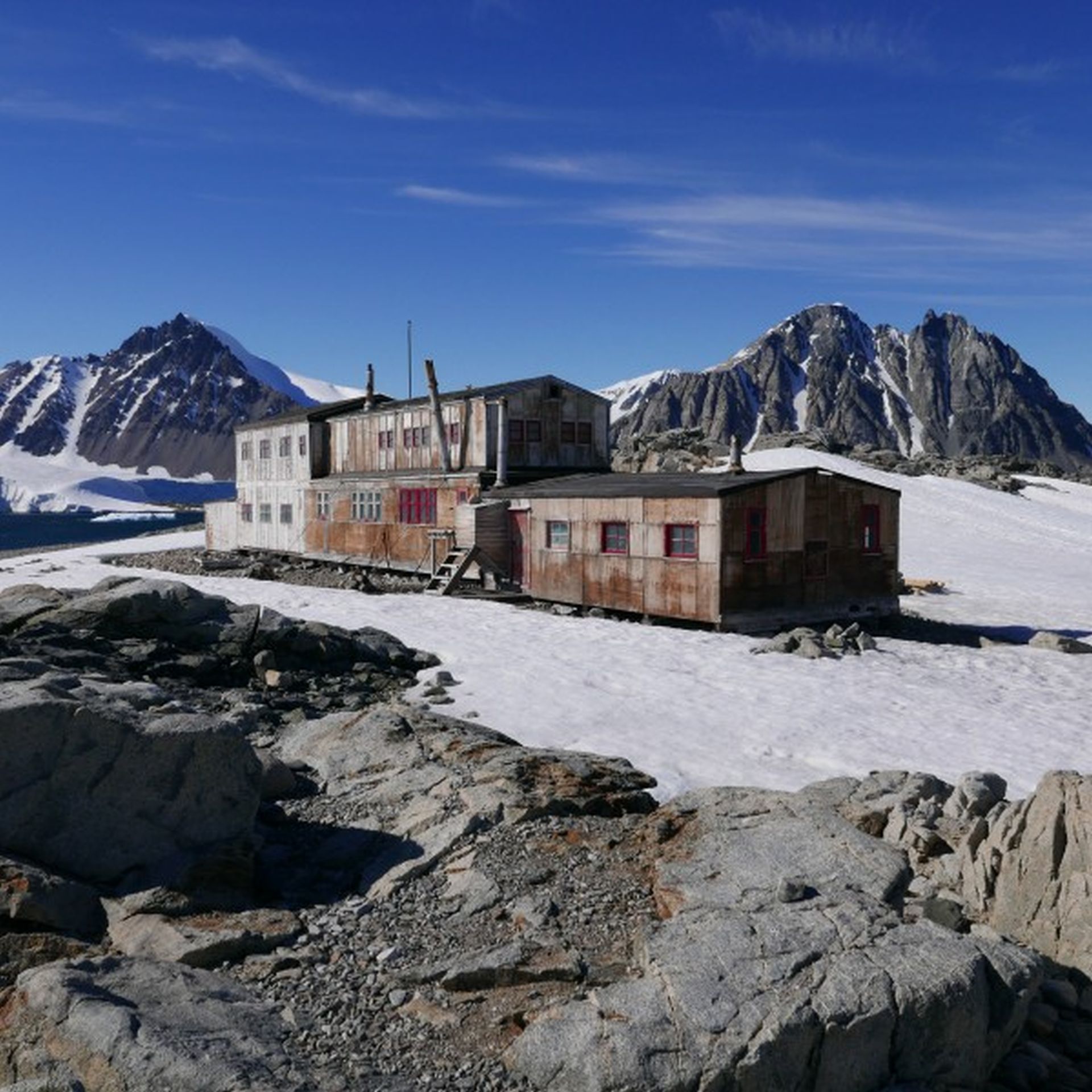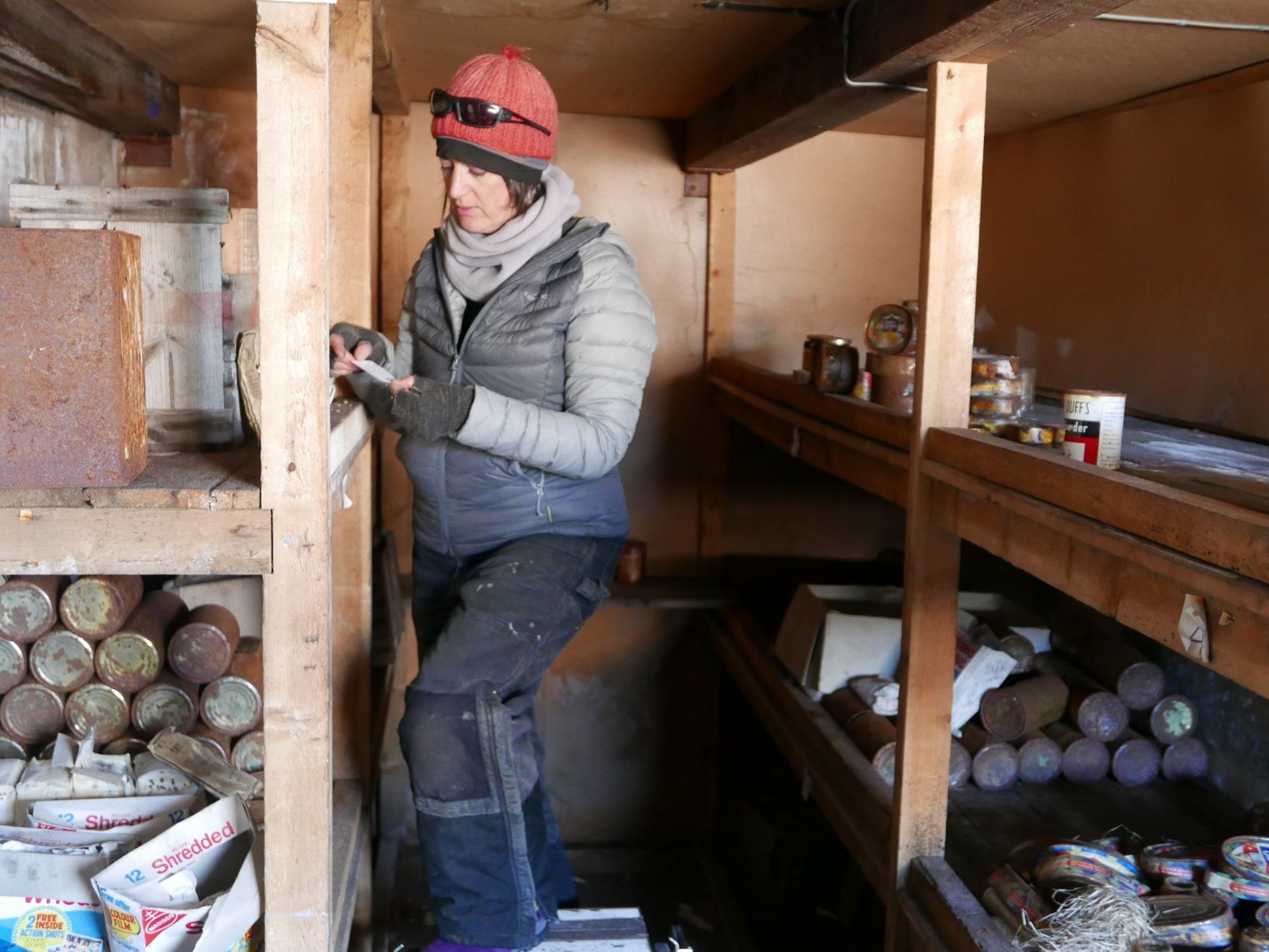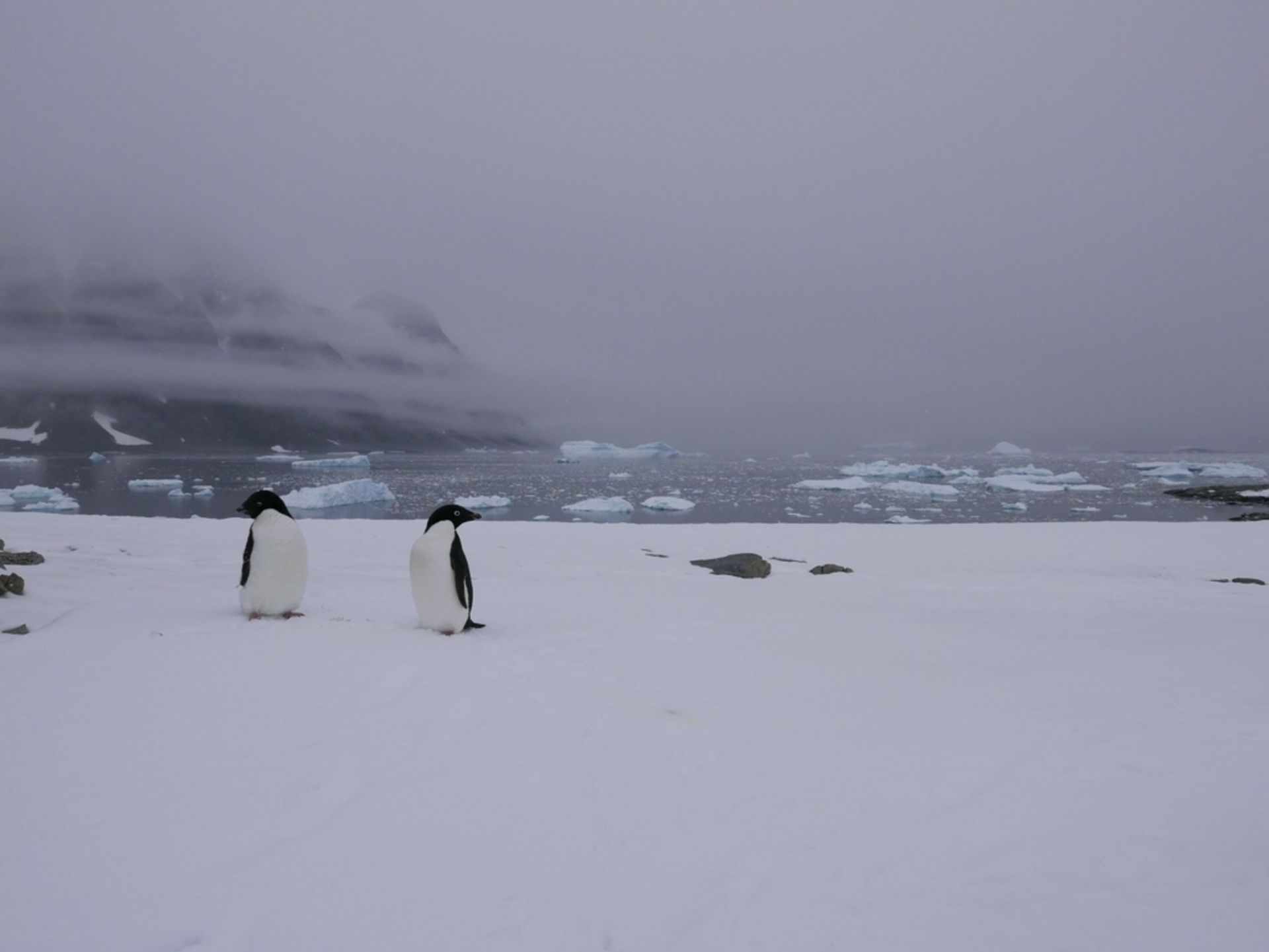Conserving Stonington Stories
“Like seeing Antarctica for the first time” is how Lizzie Meek (Programme Manager – Artefacts) described her experience at Stonington Island on the Antarctic Peninsula.

In partnership with our sister trust UKAHT, AHT staff worked as part of a 10 week programme to survey the buildings and artefacts left on Stonington Island. Changing places with Trust Programme Manager Al Fastier part way through the season, Lizzie spent six weeks in tent accommodation, cataloguing, photographing and labelling just over 6,000 artefacts.
Like some other historic sites the UKAHT manages on the Antarctic Peninsula, Base ‘E’ was deliberately abandoned, meaning that only a few emergency supplies were left behind. With fewer site visits and alterations than the Ross Island huts, the layers of history are simpler and easier to understand at Stonington.
 Antarctic Heritage Trust
Antarctic Heritage Trust Lizzie Meek
The logistics to reach Stonington are challenging however, and rely on the goodwill and strong relationships UKAHT has built up with the IAATO tour ship companies, and The Royal Navy. It takes a week by ship from either South America or the Falklands, and then good luck with the sea ice conditions to be able to make a landing on the island, and offload enough equipment to supply a six-person team for 10 weeks.
Stonington itself is a very active site, with a constantly calving glacier in the adjacent bay, and the shingle beaches occupied by Weddell, fur, crab-eater and leopard seals. Constant and noisy companions are the nesting Antarctic terns and skua, and later in the season a small collection of moulting Adelie penguins sheltered amongst the rock outcrops.
Trust Executive Director Nigel Watson says, “The Trust is delighted to share its extensive knowledge with UKAHT around cold-climate conservation based on our experience of conserving the early explorer bases at Ross Island and the 20,000+ artefacts they left behind. Over many years, conservators working on the Ross Sea Heritage Restoration Project have developed innovative and detailed methodologies for treating artefacts from the world’s most extreme environment.”
 Antarctic Heritage Trust
Antarctic Heritage Trust Penguins on Stonington
The survey revealed that the bulk of items to be conserved at Stonington are food tins and parts relating to the Lister generator set (that provided electricity for the base). Conditions on the island are challenging for artefacts, being wetter and saltier than Ross Island. The buildings get drenched in salt spray, which is picked up and hurled horizontally across the island by the infamous ‘Fumigator’ katabatic wind. The wind whirls down the glacier from the top of the peninsula at speeds of 150kph.
Although many things (tents, limited food, cold toes, snow and rusty tins) were similar to working at the Ross Island huts, there are some noticeable differences, including diverse wildlife, higher tourist numbers, and more modern materials involved.
Overall it offered Lizzie a fresh perspective on Antarctica. She says, “An incredible environment and history, challenging logistics and conservation issues, plus working with a team and organisation who share our passion for preserving historic Antarctic sites – it doesn’t get much better!”
You can see the stunning sights of Stonington for yourself in the video below…

 Keith Parsons
Keith Parsons